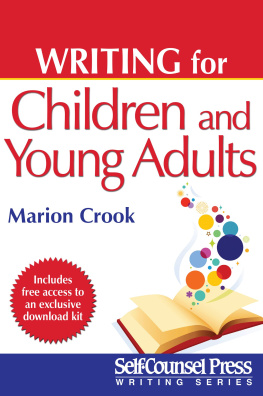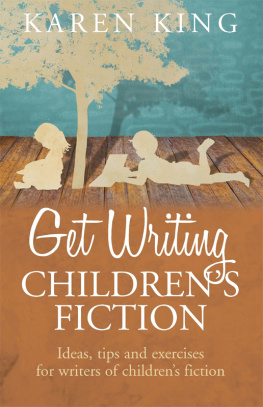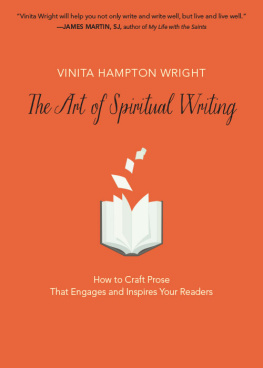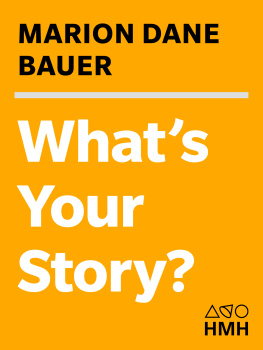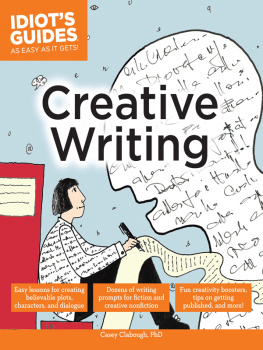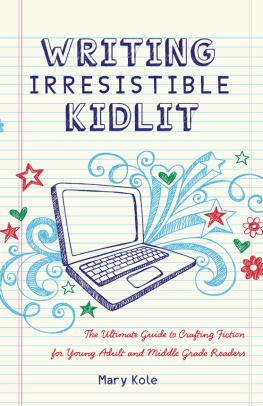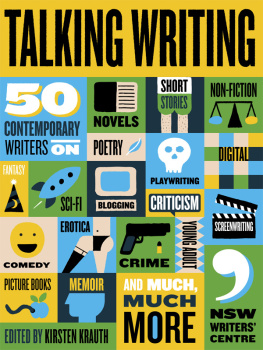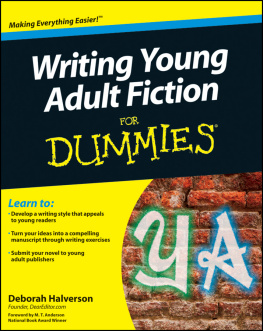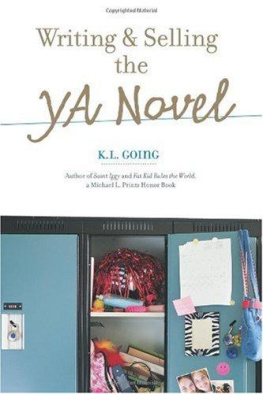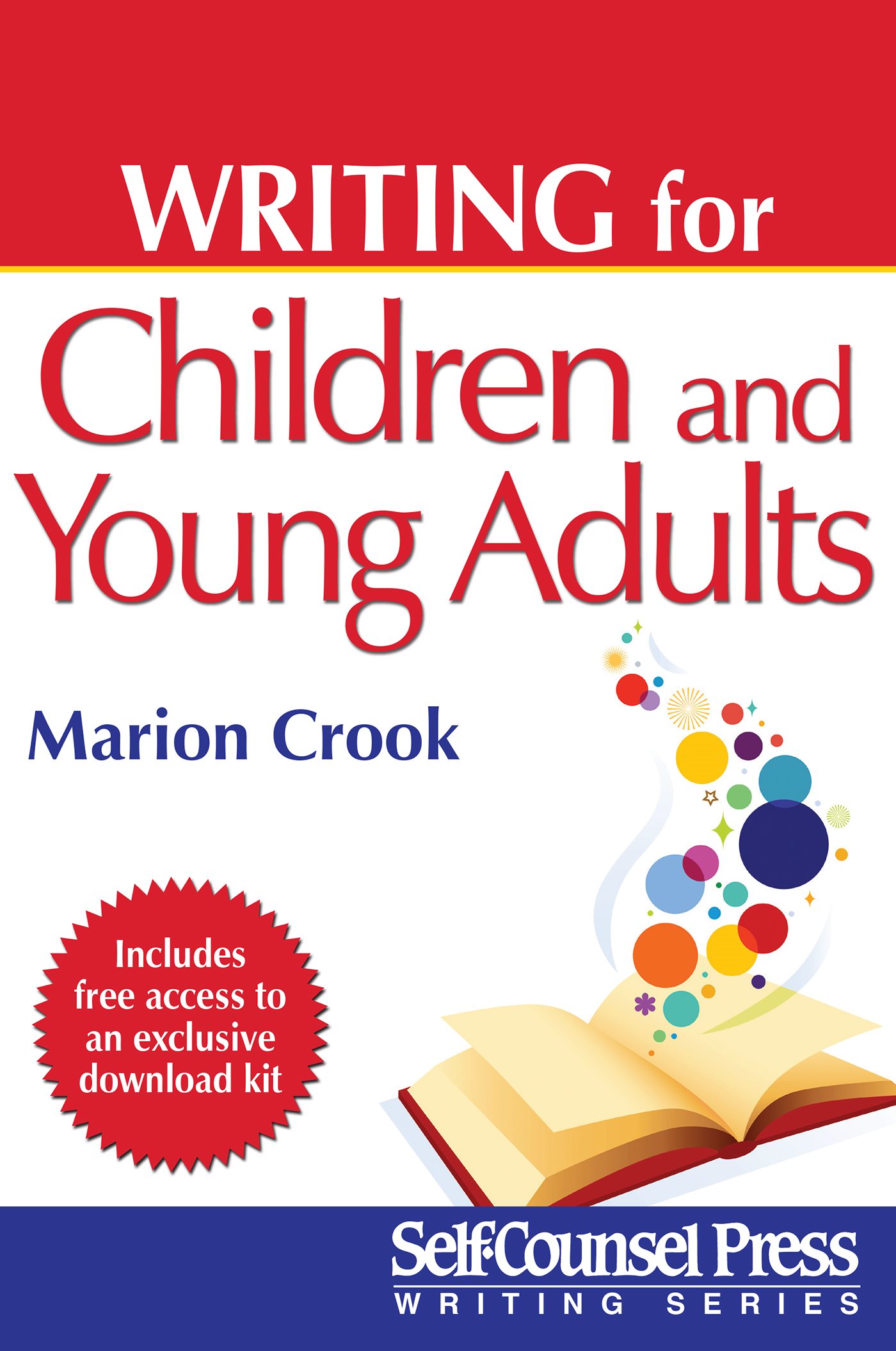Introduction
Since the first publication of this book, the publishing industry has changed greatly. Authors have more ability to contact each other in online writing groups, at organized meetings, and creative writing classes. Trends in subject matter have moved. Childrens writing has gained prestige. Thank you, J.K. Rowling. The success of the Harry Potter books created a huge swell of confidence among writers of childrens books.
See! We wanted to shout. We can write wonderful books that make money!
Many publishers have closed their doors; however, the publication of childrens books remains steady and publishers continue to give writers opportunities for sales. Some find a home online by self-publishing (the Indie world) and are satisfied with the sales generated there. Such sales have the positive quality of control over marketing, but often the obvious lack of editorial input. It is possible to buy editorial input and improve the quality of self-published books. This is becoming attractive to many.
Reports on sales of childrens books which include Young Adult, but often do not include the recent category New Adult (ages 18 to 25), show that sales increased in 2012 and decreased in 2013 to remain much as they had been. While book sales arent skyrocketing, there is still a solid market for hard copy books and e-books. The stimulus of The Hunger Games by Suzanne Collins created a bulge in sales for 2012. Perhaps your new book will be the catalyst for sales in the coming years.
Writers havent changed much. We still want to write wonderful stories. We want to engage the reader. We want to live in the exciting world of the imagination and get paid enough to stay there. No, we havent changed much. The writers I meet are still interesting, creative, energetic, and willing to work very hard. Most of us continue to want to improve our writing and put out story after story that captivates our readers. I am sitting at my computer on a hot summer day in the beautiful town of Gibsons, British Columbia (when everyone else is on the beach), thinking about the many writers who are also at their computers, working to bring the ideas in their minds through their skills, and with all the precise and perfect words they know into the minds of readers. I hope this book helps you and makes that process easier and more enjoyable.
Who can write for kids and teens? Anyone can, but to write well, you need special skills. Writers of childrens books can be young, old, married, single, with children, or without children. They can be teachers, plumbers, nurses, or bakers. In some ways, writing for children is like paddling a canoe: Almost anyone can do it, but performing well requires skill, practice, and some understanding of what youre doing.
Writing for children can make money for you. If you continually produce high-quality stories that please your publishers and your readers, your books may have a long life and bring you royalties for years. But such a sustained writing life requires enthusiasm, energy, practice, and knowledge. Luckily, we all have some knowledge of children, if only from our own childhood. We usually remember what happened to us as a child, how we felt, and what we expected.
I remember my five brothers and sisters and my cousin who lived with us embarking on all kinds of adventures in the West Coast Canadian country of my childhood. When I was 13 years old I remember tying my 6-year-old brother to a rope secured around my waist when I was rock climbing because I felt responsible enough to keep him from falling, but not so responsible that I stayed at the bottom of the cliff face. The credo of my siblings was that if you got yourself into trouble, you got yourself out of it. We called for help only in instances of broken bones or concussions.
I grew up, got a degree in nursing, and practiced community health nursing in the Cariboo country in British Columbia, Canada. My husband, four children, and a part-time nursing job kept me very busy. We lived on a ranch when my children were young, and I associated with friends of my children who were, for the most part, independent and interesting people. They solved problems, dealt with perplexing situations, and had strength of character. They were not little adults, nor were they helpless. I told stories to my children and wrote short stories for the CBC (Canadian Broadcasting Company), and then, in 1982, I wrote about Susan George, a 16-year-old intrepid amateur sleuth who managed to create excitement through four books. I left my nursing job and began to write full time. I sold my first books to Grolier Ltd. and contracted to write more. I have had 12 books of fiction and 11 other nonfiction books published since that time.
When I began to write for children, besides my own childhood experiences from which to draw, I had some rudimentary skills of grammar and composition and a fuzzy notion of conflict, resolution, and suspense. But I also had great respect for my readers. I remembered myself as a girl reading L.M. Montgomerys Anne of Green Gables and Emily of New Moon. The girl I was in those early reading years responded to the honesty and integrity of the characters and, as an adult writer, I was determined to give my readers characters of similar worth: Characters who were intelligent, forthright, interesting, curious, and honest. Right from the beginning, fundamental to my writing was that my fictional characters were strong. I wanted my readers to respect these imaginary people and engage in life with them with verve and the expectation of excitement. I expect you, too, to approach your writing with a definite attitude toward children.
I learned my writing skills with study; the help of my agents, editors, and publishers; hours of rewriting; and by teaching others. Teaching workshops to high school students and adults was a great way for me to learn clarity of process. In order to explain what you do, you must first understand it. My students taught me. You also can learn.
One of the most exciting aspects of writing for children and teens is the sense of a new beginning with each book. I always start with the idea that this book is going to be the best one Ive ever written. Certainly, it is always the project I find most interesting at the time. When interviewers and children ask me what book of all I have written do I like the best, my answer is usually, The one Im working on now. What Im presently creating seems to be the most entrancing, probably because I have a sense of almost unlimited choice about what this book is going to say.
Aside from the personal satisfaction of creating magic for your readers, there is an educational goal that writing for children serves. Children who read early and enjoy it are more likely to incorporate reading into their lives and sustain a lifelong interest in books and so in the subjects, personalities, and ideas contained in books. Anything is possible for those who read.
Writing for children is wonderful, emotionally satisfying, exciting, and sometimes overwhelming, but it takes the same imagination, energy, skill, and tenacity that writing for adults does, with the added skill of putting yourself into the skin of your reader at a particular age. I have lost track of the number of people Ive met who believe that writers of childrens books will one day grow up to write real books for adults, as if skillfully written, well-crafted magical books for children are somehow practice for an adult book. Books for children may be shorter, but they take a similar (perhaps greater) degree of skill and energy as writing books for adults, and the competition for publication is fierce.

